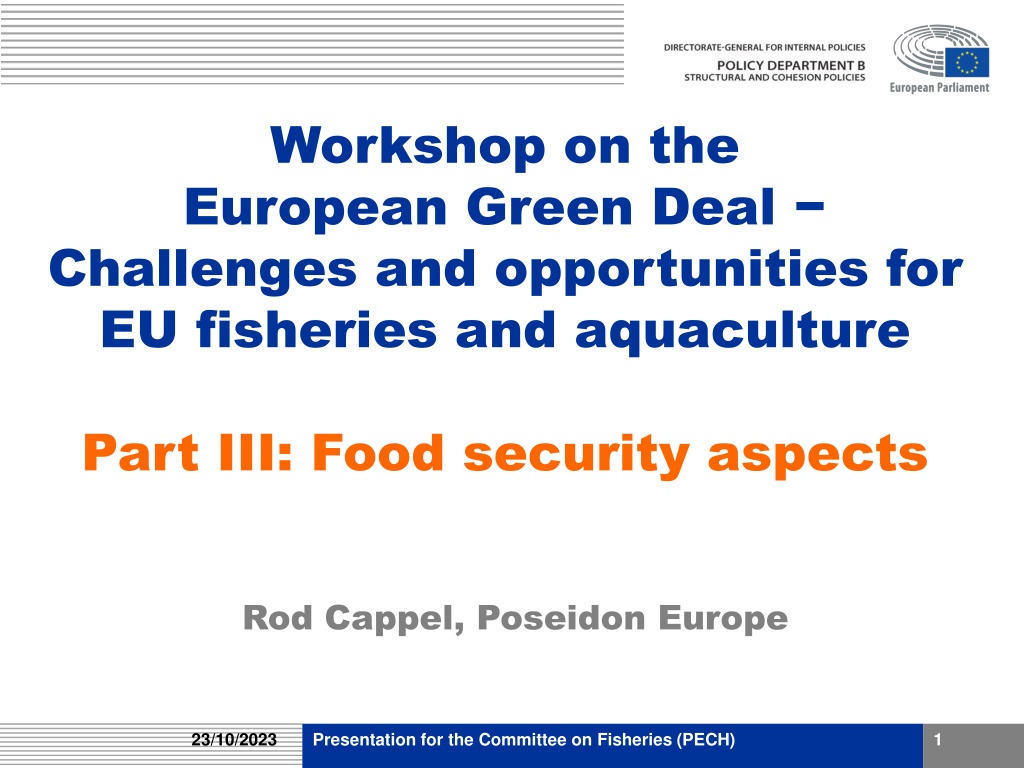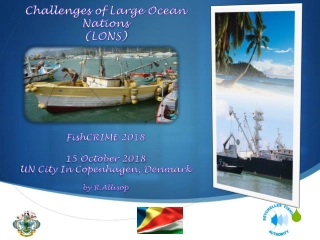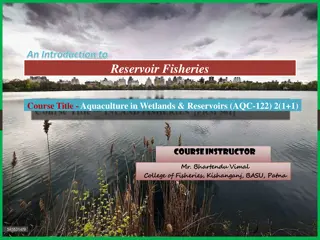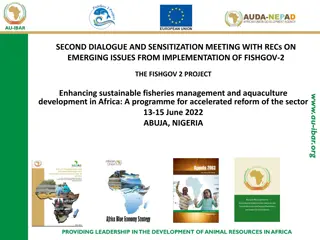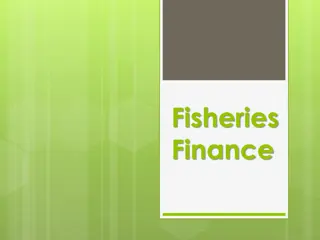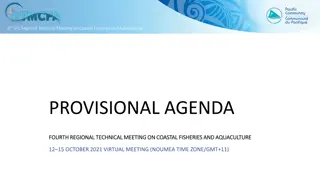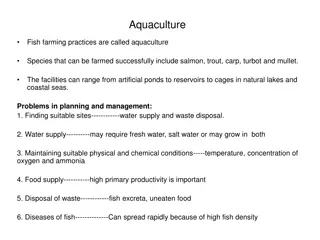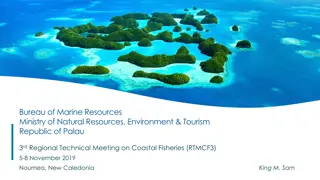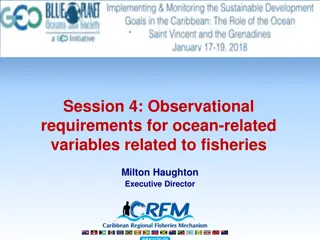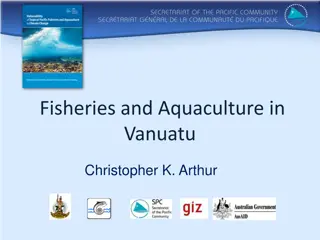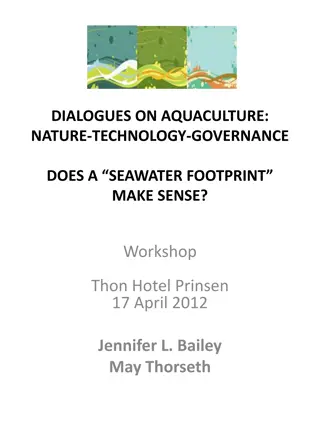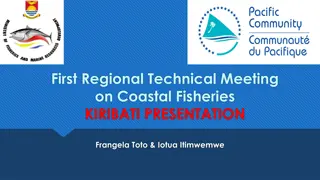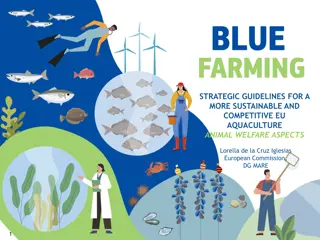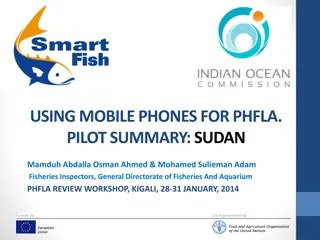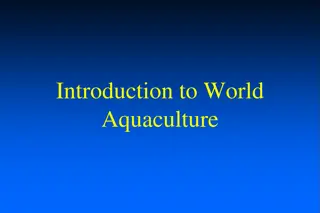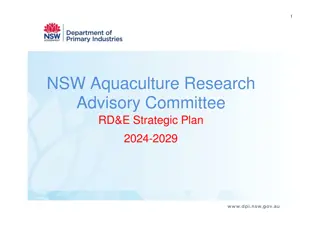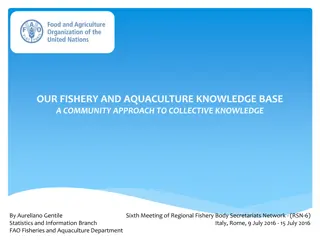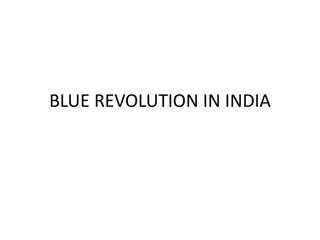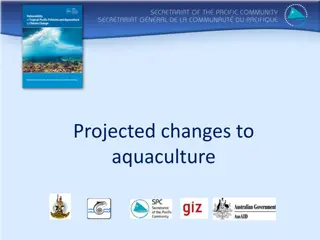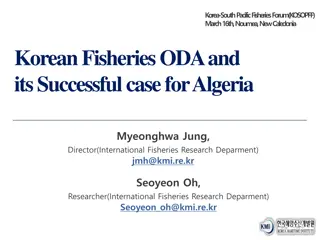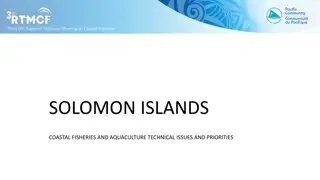Workshop on European Green Deal Challenges & Opportunities for EU Fisheries and Aquaculture
The presentation by Rod Cappel from Poseidon Europe discusses the food security aspects of the European Green Deal (EGD) for EU fisheries and aquaculture. It covers study objectives, EGD policy instruments overview, case studies on EU seafood imports and aquaculture, and provides policy recommendations to the European Parliament. The EGD aims to address climate change and environmental degradation, impacting fisheries and aquaculture production. Challenges, opportunities, and solutions are analyzed, emphasizing the transition to sustainability and best practices.
Download Presentation

Please find below an Image/Link to download the presentation.
The content on the website is provided AS IS for your information and personal use only. It may not be sold, licensed, or shared on other websites without obtaining consent from the author. Download presentation by click this link. If you encounter any issues during the download, it is possible that the publisher has removed the file from their server.
E N D
Presentation Transcript
Workshop on the European Green Deal Challenges and opportunities for EU fisheries and aquaculture Part III: Food security aspects Rod Cappel, Poseidon Europe 23/10/2023 Presentation for the Committee on Fisheries (PECH) 1
Structure of the Presentation Structure of the Presentation 1. Study objectives 2. Overview of main EGD Policy Instruments 3. Case Study 1: EU dependence on seafood imports 4. Case study 2: EU aquaculture production 5. Policy recommendations 23/10/2023 Presentation for the Committee on Fisheries (PECH) 2
1. Study objectives 1. Study objectives Present an overview of the main European Green Deal (EGD) policy initiatives as regards food security. Analyse the overall challenges, opportunities and solutions for EU fisheries and aquaculture with regards to food security and the transition to sustainability. Illustrate best-practices and lessons learnt from case studies: (i) EU seafood imports and (ii) EU aquaculture. Provide policy recommendations to the European Parliament. 23/10/2023 Presentation for the Committee on Fisheries (PECH) 3
2. Overview of main European Green 2. Overview of main European Green Deal Policy Instruments (1) Deal Policy Instruments (1) The EGD is the EU s overarching environmental strategy to address climate change and environmental degradation. Climate change has severe consequences for fisheries: Redistribution of fish stocks and loss of catch potential. Decreasing global catch also impacts aquaculture: 2/3 of production is currently dependent on food from wild fisheries. Increased disease risk & storm damage. 23/10/2023 Presentation for the Committee on Fisheries (PECH) 4
2. Overview of main European Green 2. Overview of main European Green Deal Policy Instruments Deal Policy Instruments (2) Farm to Fork, the EU s food production strategy, has the most direct implications for food security. Seafood species representing the bulk of production by weight are relatively low-carbon food. Blue Farming promotes the expansion of shellfish and algae production in the EU. Fit for 55 package has implications for fuel intensive fisheries (32% of EU landings are from bottom trawl) EU Biodiversity Strategy for 2030 may impact fisheries activity damaging seabed habitats and areas available for aquaculture growth. (2) 23/10/2023 Presentation for the Committee on Fisheries (PECH) 5
3. Case Study 1: EU dependence on 3. Case Study 1: EU dependence on seafood imports (1) seafood imports (1) The EU produces 5 million tonnes of seafood a year (2% of global production, 7th largest globally). 4 million for direct EU consumption. Growth in EU consumption supplied by extra-EU imports, often via intra-EU exchanges. Asia is a major re-processing centre for EU seafood, but some decline since Covid19. 23/10/2023 Presentation for the Committee on Fisheries (PECH) 6
EUR OPEAN MARKET OBSERVATOR Y FOR FISHER IES AND AQUACULTUR E PRODUCTS - THE EU FISH MARKET - 2022 EDITION MAR KET SUPPLY 3. Case Study 1: EU dependence on 3. Case Study 1: EU dependence on seafood imports (2) seafood imports (2) 12,00 100% 90% APPARENT CONSUMPTION 10,00 SELF-SUFFICIENCY RATE 80% 70% 8,00 60% 6,00 50% 40% 4,00 30% 20% 2,00 10% 0,00 0% 2011 2012 2013 2014 2015 2016 2017 2018 2019 2020 Apparent consumption (million tonnes) Self-sufficiency rate . 23/10/2023 Presentation for the Committee on Fisheries (PECH) 7 31
3. Case Study 1: EU dependence on 3. Case Study 1: EU dependence on seafood imports (3) seafood imports (3) Science-led management works: worldwide, assessed fish stocks have a greater relative abundance than unassessed stocks. Sustainable fisheries models are well-understoodbut must be applied to all EU production and its imports. The overcapacity in global fishing fleets is exacerbated by fleet subsidies. The EU s SFPAs with non-EU countries contribute around 9% of EU production. Instead of just avoiding negative food-security impacts, they can take positive action. 23/10/2023 Presentation for the Committee on Fisheries (PECH) 8
4. Case study 2: 4. Case study 2: EU aquaculture production EU aquaculture production EU aquaculture contributed around 1.1 million tonnes of seafood in 2020, half of which were low-trophic species. The recent Strategic guidelines for sustainable EU aquaculture focus on building resilience, encouraging innovation and participating in the green transition. EU aquaculture needs to diversify in terms of species and by production methods. Greater focus on low and multi-trophic aquaculture, the use of circular materials, like insect meal in aquafeed and a holistic, ecosystem approach to aquaculture. 23/10/2023 Presentation for the Committee on Fisheries (PECH) 9
5. Policy recommendations (1) 5. Policy recommendations (1) Improve food security from EU fisheries: Sustainable, science-based fisheries management. Reduce emissions from the EU fishing fleet. Address the environmental impacts of fisheries production. Improve food security from EU aquaculture: Formal adoption of the ecosystem approach to aquaculture (EAA). Encourage low-trophic aquaculture & healthy consumption. Recognise and use ecosystem services from aquaculture. Innovative technology and approaches to reduce the environmental impact of aquaculture. Encourage circularity in feed, equipment and techniques. 23/10/2023 Presentation for the Committee on Fisheries (PECH) 10
5. Policy recommendations (2) 5. Policy recommendations (2) Improve food security of imported seafood: Support sustainable non-EU production (regional management, national support, knowledge-sharing). Ensure a level playing field for EU producers (equal standards, clear labelling and improved traceability). Improve food security in the seafood supply chain: Improving the efficiency of supply chains. Sustainable diets and consumption. 23/10/2023 Presentation for the Committee on Fisheries (PECH) 11
